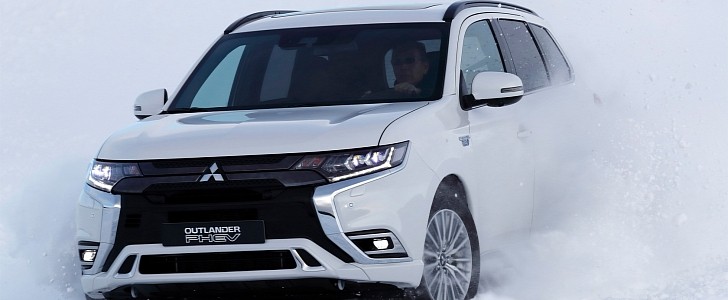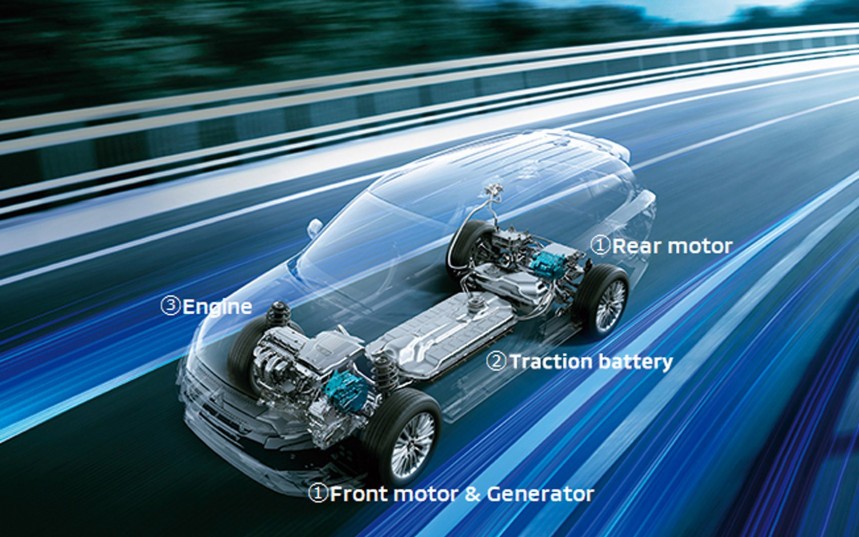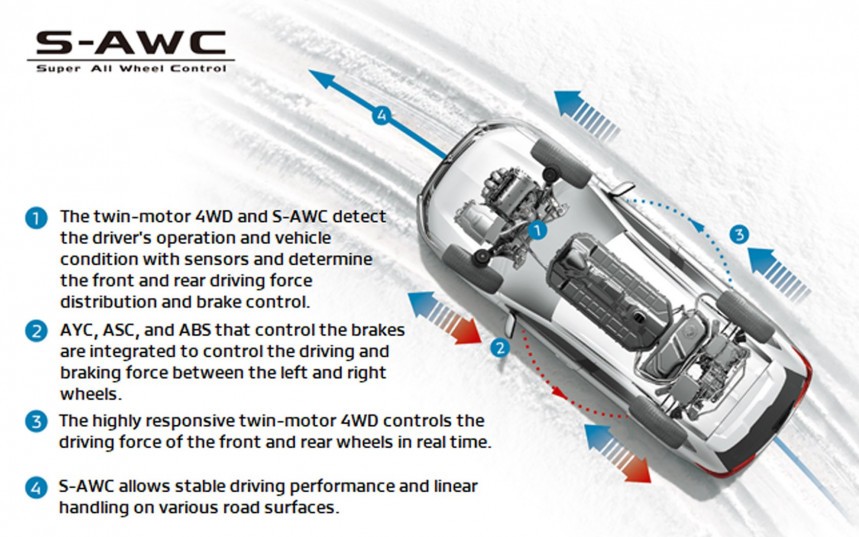To tackle environmental issues, Mitsubishi Motors have been developing EVs from early on, releasing models such as the i-MiEV and MINICAB-MiEV. However, to successfully overcome challenges like driving range and charging infrastructure, they also developed a capable PHEV system. Its latest iteration will be made available on most of its current models, with the 2021 Eclipse Cross being the most recent recipient of this drivetrain.
Combining the experience gained from developing all-electric vehicles, the Japanese carmaker has rapidly developed a plug-in hybrid EV (PHEV) system. The first model to use this capable powertrain was the third-generation Outlander which quickly became one of the best-selling PHEV SUVs in the world.
The system uses two compact 60 kW (80 hp) motors that independently control the front and rear axles, serving as a 4WD system. The motors can exclusively power the vehicle in EV mode or aid the conventional gasoline engine.
Energy is stored in a 13.8 kWh lithium-ion battery specifically developed for Mitsubishi’s versatile PHEV powertrains. It contains 80 battery cells connected in series and has a total voltage of 300 V.
The battery pack is integrated into the chassis structure, being enclosed in a strong, waterproof structure. This layout increases the overall strength, rigidity, and durability of the vehicle.
Mitsubishi’s PHEV system features an EV and two HEV driving modes to maximize efficiency and fuel consumption. When the full EV mode is activated, the vehicle is powered by the electric motors for a range of about 55 km (35 miles).
In series hybrid mode, the vehicle is also driven by the electric motors, but the ICE is also turned on, acting as a generator to help power the motors and reduce energy consumption from the battery pack. The latter can also be charged using either regular or DC fast-charging sockets.
In parallel hybrid mode, the engine becomes the primary source of power at high speeds while the two motors aid it when accelerating. It uses an Atkinson cycle achieved through cam profile adjustment and valve timing control, which delivers efficient power at low rpm and significantly reduces engine noise.
The system can also use regenerative braking, a feature that is present on the Outlander PHEV. The motors act as generators during normal deceleration, with the resulting energy used to charge the battery. The Outlander is also equipped with a paddle behind the steering wheel that can be used to control regenerative braking.
The use of a twin-motor system that independently drives each axle means torque distribution can be instantly adjusted, which drastically improves handling, stability, and safety while offering a comfortable driving experience in various road conditions.
To do this, Mitsubishi engineers have developed the S-AWC (Super All Wheel Control) torque vectoring system. It uses integrated sensors to monitor road conditions and driving style to actively distribute torque to each axle using the two motors.
The system also integrates the ASC, ABS, and active yaw control (AYC) to control the braking force between the right and the left wheels.
This versatile PHEV system can also be fitted with a 100V AC power supply that can be used on the worksite, for outdoor activities, or in case of an emergency. Along with the Vehicle-to-Home technology, Mitsubishi’s powertrain can be used to supply power to an average household for up to 10 days.
The system uses two compact 60 kW (80 hp) motors that independently control the front and rear axles, serving as a 4WD system. The motors can exclusively power the vehicle in EV mode or aid the conventional gasoline engine.
Energy is stored in a 13.8 kWh lithium-ion battery specifically developed for Mitsubishi’s versatile PHEV powertrains. It contains 80 battery cells connected in series and has a total voltage of 300 V.
The battery pack is integrated into the chassis structure, being enclosed in a strong, waterproof structure. This layout increases the overall strength, rigidity, and durability of the vehicle.
In series hybrid mode, the vehicle is also driven by the electric motors, but the ICE is also turned on, acting as a generator to help power the motors and reduce energy consumption from the battery pack. The latter can also be charged using either regular or DC fast-charging sockets.
In parallel hybrid mode, the engine becomes the primary source of power at high speeds while the two motors aid it when accelerating. It uses an Atkinson cycle achieved through cam profile adjustment and valve timing control, which delivers efficient power at low rpm and significantly reduces engine noise.
The system can also use regenerative braking, a feature that is present on the Outlander PHEV. The motors act as generators during normal deceleration, with the resulting energy used to charge the battery. The Outlander is also equipped with a paddle behind the steering wheel that can be used to control regenerative braking.
The use of a twin-motor system that independently drives each axle means torque distribution can be instantly adjusted, which drastically improves handling, stability, and safety while offering a comfortable driving experience in various road conditions.
The system also integrates the ASC, ABS, and active yaw control (AYC) to control the braking force between the right and the left wheels.
This versatile PHEV system can also be fitted with a 100V AC power supply that can be used on the worksite, for outdoor activities, or in case of an emergency. Along with the Vehicle-to-Home technology, Mitsubishi’s powertrain can be used to supply power to an average household for up to 10 days.









